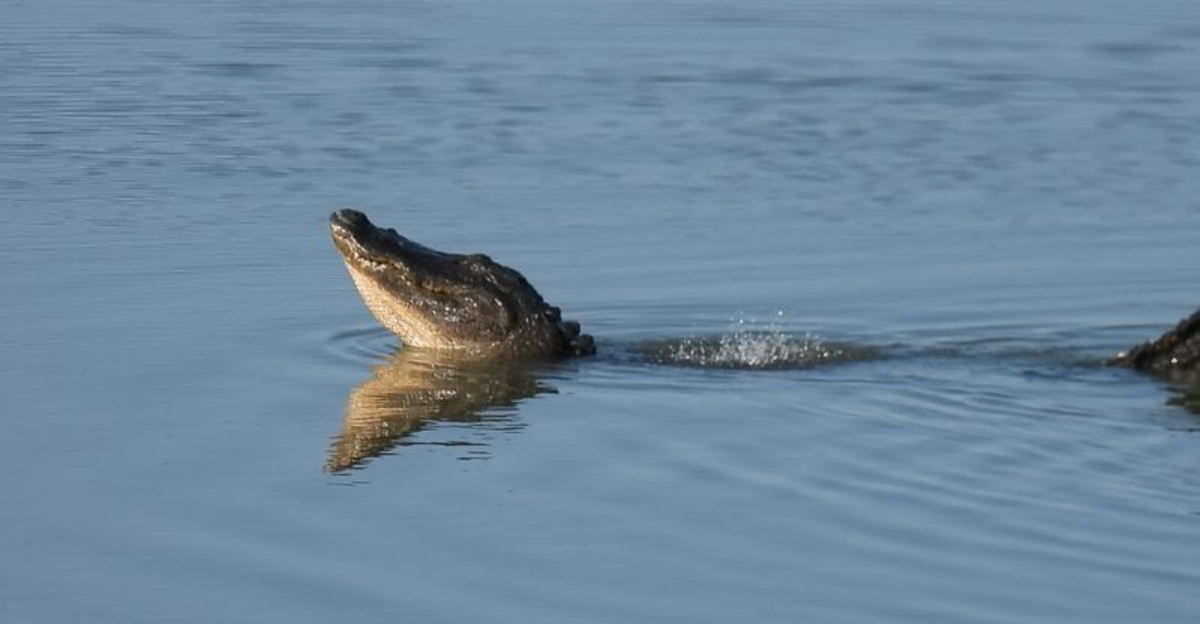The American alligator is one of Louisiana’s most iconic residents, perfectly adapted to the bayous and wetlands that make this state unique.
These fascinating reptiles are more than just a symbol of the wild, they play a crucial role in the ecosystem and have become an integral part of the local culture and economy.
In this article, we’ll explore 10 fascinating facts about the American alligators that call Louisiana’s bayous home, giving you a deeper appreciation for these incredible animals.
1. Habitat Range
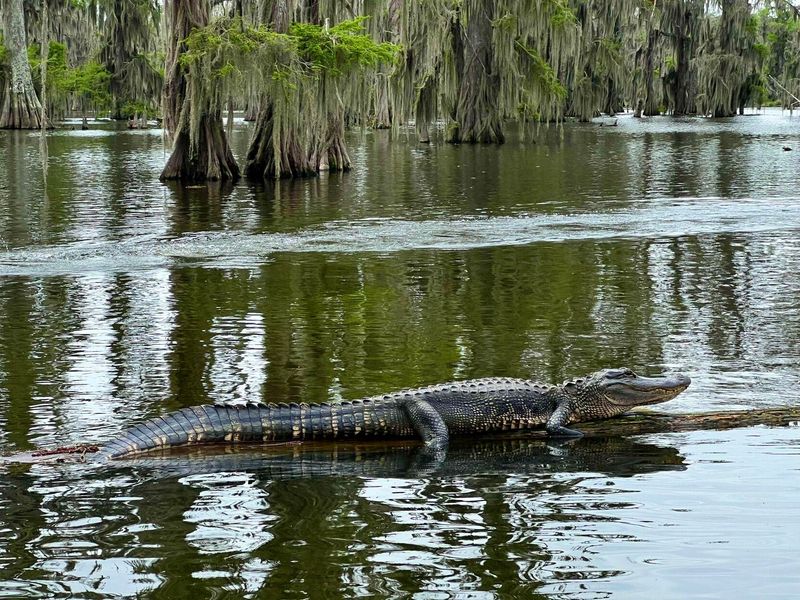
American alligators claim Louisiana’s cypress swamps, marshes, rivers, lakes, and bayous as their prime real estate. These cold-blooded homeowners don’t just live anywhere – they need specific habitat features including slow-moving water, abundant prey, and spots for basking in the sun.
Female gators show remarkable loyalty to their home ranges, often returning to the same nesting sites year after year. Males, meanwhile, patrol larger territories, especially during mating season when they’re feeling particularly possessive.
Louisiana hosts the highest alligator population density in America, with some areas boasting up to one gator per acre of wetland!
2. Population
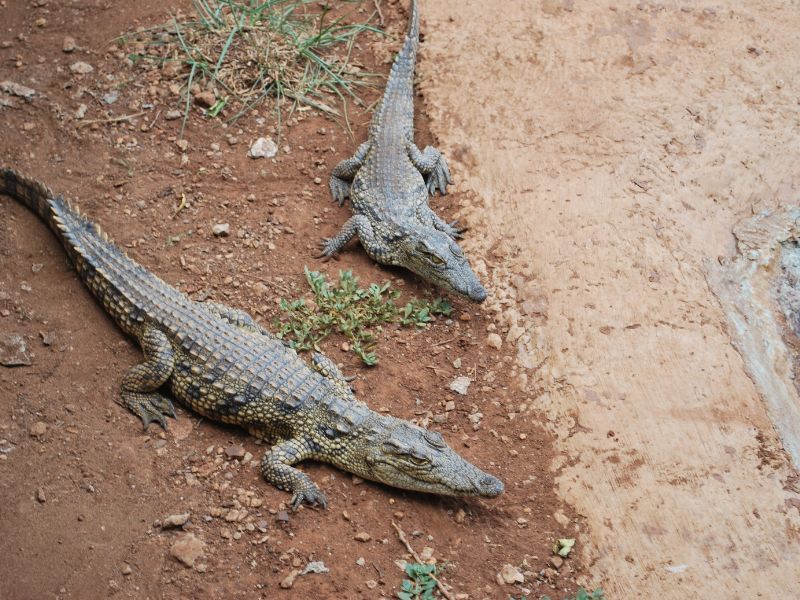
Louisiana’s alligator population has rocketed from near extinction to approximately two million wild alligators today. This remarkable comeback story represents one of America’s greatest wildlife conservation triumphs.
Surprisingly, these reptiles aren’t evenly distributed throughout the state. The coastal parishes contain the highest concentrations, with some areas supporting one alligator per 2-3 acres. Beyond the wild population, Louisiana also hosts over 300,000 farm-raised alligators annually.
These operations, regulated by wildlife officials, support both conservation and commerce, creating a unique balance between protecting a species and utilizing it as a renewable resource.
3. Diet

Gators aren’t picky eaters! Their menu features whatever unfortunate creatures cross their path – fish, turtles, birds, mammals, and even smaller alligators. Young alligators primarily feast on insects, frogs, and small fish before graduating to larger prey.
Their hunting technique? Pure ambush. With eyes and nostrils positioned atop their heads, these stealthy predators can remain almost completely submerged while scanning for dinner. When prey approaches, they explode from the water with surprising speed.
Louisiana’s bayou alligators play a crucial ecological role by controlling populations of nutria, an invasive rodents that destroy wetland vegetation.
4. Reproduction
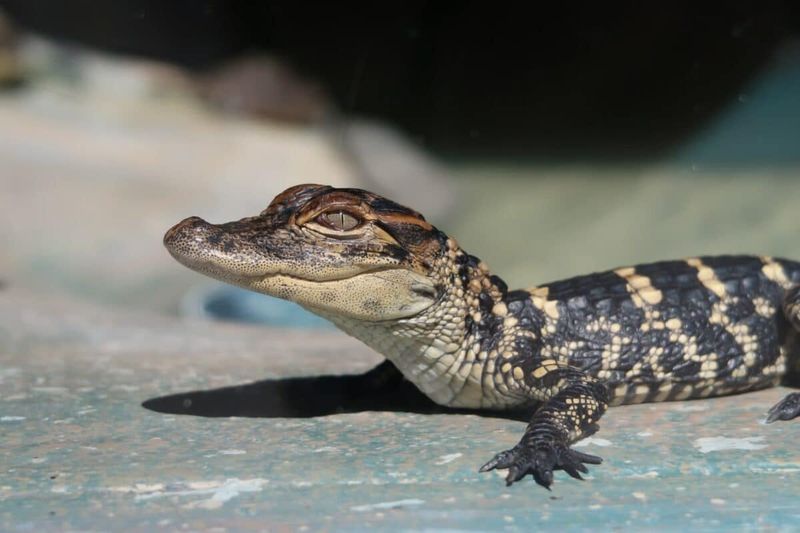
Mama gators are surprisingly attentive parents! Females build massive vegetation mounds for nests, where they deposit 20-50 eggs before covering them for protection.
The rotting vegetation generates heat that determines the babies’ sex – warmer nests produce males, cooler nests yield females. After a 65-day incubation, hatchlings emit high-pitched yelps from inside their eggs.
Mom responds by digging them out, then gently carries the 8-inch babies to water in her fearsome jaws. For up to two years, mother alligators fiercely protect their young from predators including raccoons, birds, and even adult male alligators who wouldn’t hesitate to eat the youngsters!
5. Lifespan
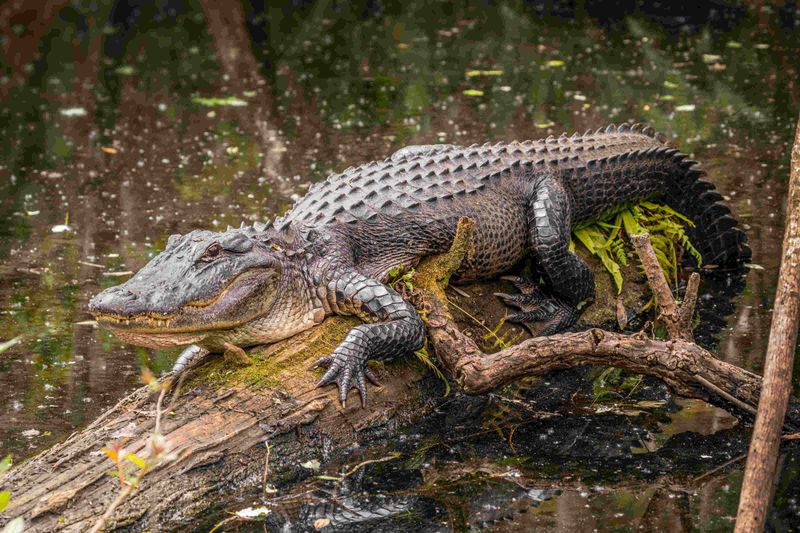
Louisiana’s gators are built for the long haul, regularly reaching 50 years in the wild! Their impressive lifespan rivals many mammals despite facing harsh environmental challenges and territorial conflicts. Growth patterns tell fascinating stories about their lives.
Young alligators grow rapidly – about a foot per year – until reaching sexual maturity around 6-7 feet. After that, growth slows dramatically, with males eventually reaching 10-15 feet and females topping out at 8-10 feet.
Age determination requires examining growth rings in their bones or scutes (the bony plates along their backs). The oldest documented wild American alligator reached a whopping 79 years!
5. Speed
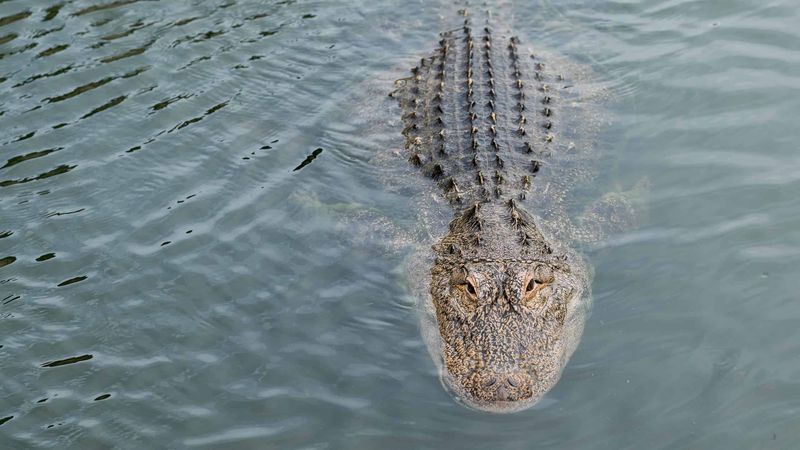
Don’t be fooled by their lazy sunbathing habits! Louisiana’s gators can launch from zero to terrifying in milliseconds. On land, these prehistoric powerhouses can sprint up to 35 mph for short bursts – faster than Olympic sprinters!
Water is where they truly shine. Their muscular tails propel them through bayous with remarkable agility, reaching speeds of 20 mph while swimming. This aquatic advantage helps them ambush unsuspecting prey with explosive power.
Perhaps most impressive is their bite force, measured at over 2,000 pounds per square inch – strong enough to crush turtle shells and bone. For perspective, that’s more than twice the bite force of a lion!
6. Communication
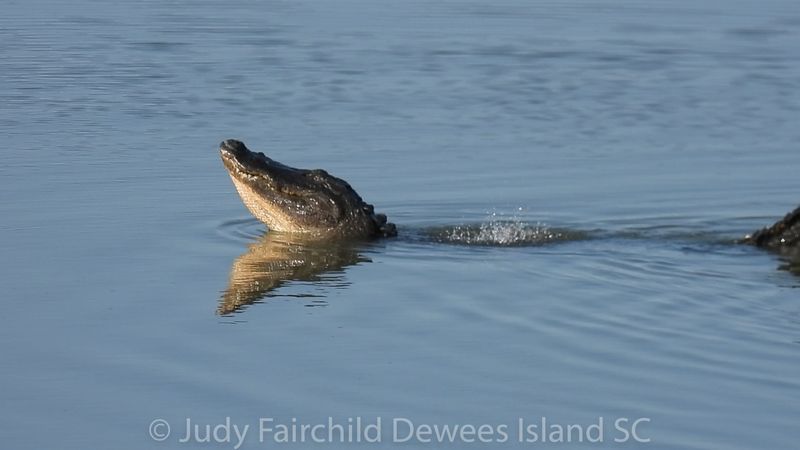
Gators might seem silent and stoic, but they’re actually quite chatty! During mating season, males emit deep, thunderous bellows that can be heard a mile away. These low-frequency rumbles literally make the water dance around them, creating an impressive visual display.
Beyond bellowing, alligators communicate through head-slaps, jaw-claps, and various hisses. Young gators call to their mothers with distinctive yelps that trigger protective responses.
Researchers have identified at least four distinct vocalizations in Louisiana’s alligators, suggesting a more complex communication system than previously thought. These prehistoric reptiles even use infrasound – sounds too low for human ears to detect!
7. Conservation Success
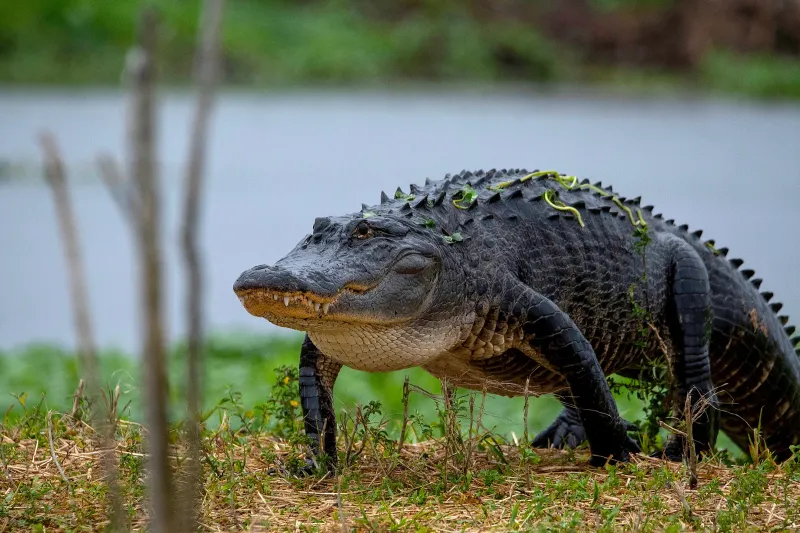
Louisiana’s alligator comeback story should be taught in conservation masterclasses! Once hunted to near extinction for their valuable hides, these reptiles were among the first species protected under precursors to the Endangered Species Act in 1967.
The state pioneered an innovative approach: regulated harvesting combined with captive breeding and egg collection programs. This counterintuitive strategy created economic incentives for landowners to protect wetland habitats crucial for alligator survival.
By 1987, alligators had recovered so successfully that they were removed from the endangered list. Today, Louisiana’s model demonstrates how sustainable use can drive conservation success – a blueprint now applied to crocodilian management worldwide.
8. Economic Importance
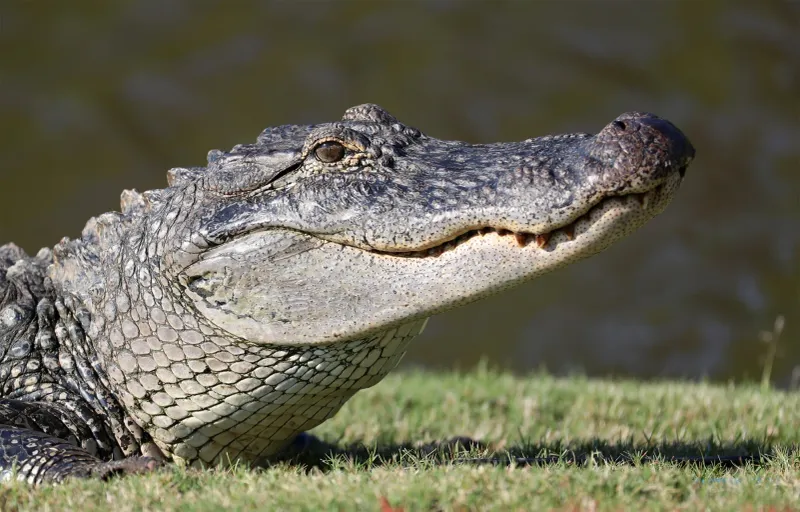
Ka-ching! Louisiana’s alligator industry generates over $80 million annually. The state leads America in wild harvests and farm production, supporting thousands of jobs across rural communities. Nothing goes to waste in this industry.
Premium hides become luxury handbags, shoes, and accessories commanding astronomical prices in fashion capitals worldwide. The meat (described as tasting like a chicken-fish hybrid) appears on menus from New Orleans to New York.
Even alligator tourism booms in Louisiana, with swamp tours attracting visitors eager to glimpse these prehistoric creatures in their natural habitat. Who knew these toothy reptiles would become such economic powerhouses?
9. Cultural Significance
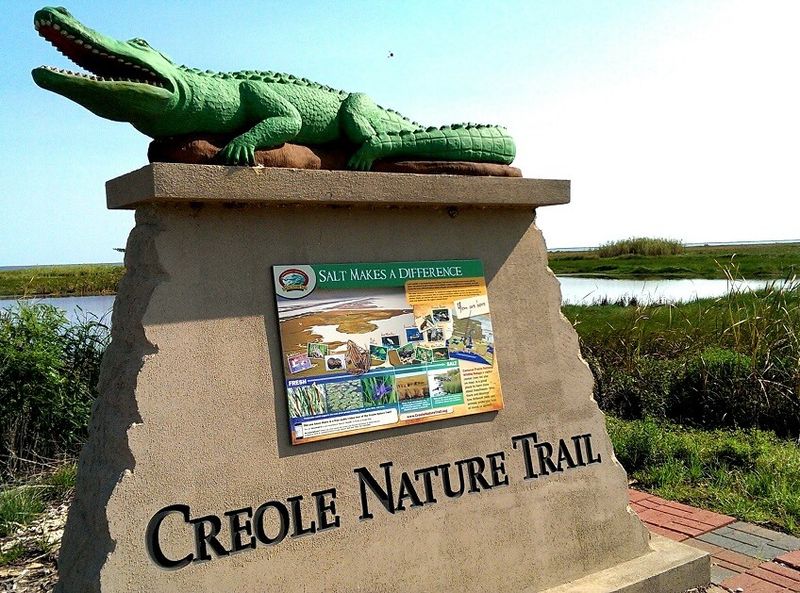
Alligators swim through Louisiana’s cultural identity as prominently as they do through its bayous! These iconic reptiles appear in everything from indigenous Houma and Chitimacha tribal legends to modern sports mascots like the University of Louisiana’s “Ragin’ Cajuns.”
Local folklore brims with tales of legendary gators – like “Old Hardhide,” a supposed 19-footer that terrorized Caddo Lake. These stories blend with genuine Cajun traditions of respectful hunting and full utilization of harvested animals.
Even Louisiana’s cuisine celebrates these reptiles. From alligator sauce piquante to deep-fried gator bites, these distinctive dishes represent cultural heritage as much as culinary innovation.
